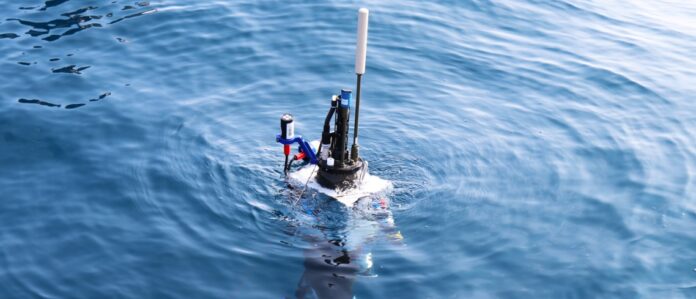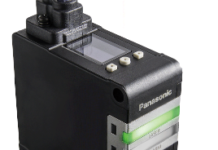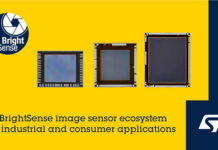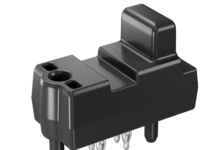
ST is proud to support adopt a float, an initiative created to monitor and teach about ocean health. In a nutshell, we are an official sponsor and use our position in the industry to help people understand the impact of climate disruption on aquatic life worldwide while making STEM studies (Science, Technology, Engineering, and Math) more accessible and desirable to the next generation. Indeed, while a team of academics and researchers leads the project and can provide valuable field data, it’s also accessible to primary school children as teaching material. Hence, adopt-a-float is more than a tool to promote ocean literacy; it is a means to shape the next innovators who will tackle environmental challenges.
adopt a float: what float?
A diving robot
As the name implies, adopt a float begins with a float. This underwater robot can dive at various depths, depending on the model, to collect numerous data, such as temperature, oxygenation, salinity, chlorophyll, nitrate, pH, and more. The float then resurfaces at regular intervals, thanks to a buoyancy mechanism, to send the information gathered using a satellite connection. The robots in this initiative can dive down to 2,000 meters (6562 feet) and last between five and seven years before changing their battery. It is thus easy to see the attractiveness of such a project for ST as it relies on sensors, embedded systems, and low-power technologies to gather new environmental data about our world.
A satellite connectivity
Moreover, the satellite connectivity, which rests on the Iridium constellation, opens the way for dynamic monitoring. For instance, developers can update the float’s firmware over the air to prioritize certain phenomena. Hence, when phytoplankton grows in spring, in a period called “the bloom”, the float will dive every two days instead of ten to increase the number of measurements. Similarly, scientists can configure a float to dive at a shallower depth, depending on what they are trying to measure. It is thus the first project of its kind because it offers much more flexibility than previous sensors that were just left in the sea and harvested after a while.
A worldwide network
All these capabilities serve The Ocean Voyagers project, which is part of the international Argo program (BCG-Argo). In a nutshell, it’s an international collaboration with UNESCO and the World Meteorological Organization (WMO) to collect information on ocean life. Initiated by the Oceanographic Laboratory of Villefranche-sur-Mer under the CNRS (French National Centre for Scientific Research) and Sorbonne University, Ocean Voyager has 2 goals :
- Amplify and sustain the development of the international BGC-Argo profiling float network, which is essential for understanding today’s ocean to anticipate tomorrow’s changes.
- To consolidate and globalize the educational program adopt a float. After more than 10 years of existence, hundreds of students of all levels have gained ocean literacy, thus showing the potential behind adopt a float.
A worldwide phenomenon
The floats were designed by the biogeochemical arm of the Argo program (BCG-Argo), an international collaboration that collects information on ocean life. Hence, while the European Union is currently leading the adopt a float initiative, similar projects are cropping up worldwide. Additionally, BCG-Argo is also working on other floats, such as one that could dive down to 6000 meters (19,685 feet). In contrast, others would be stripped-down versions measuring only salinity and temperatures. In the case of the robots used in adopt a float, the leaders behind the initiative hope to launch 4,000 floats and have at least 1,000 used in long-term studies.
adopt a float: what adoption?
A unique tool for the scientific community
Another reason ST supports this project is because it fosters a spirit of openness that can make a real difference in multiple disciplines. Indeed, 24 hours after floats send their data to the cloud, the information becomes public, meaning universities, research centers, and more can access it. The measurements have been used to improve weather forecasting, for instance, by improving cyclone and typhoon prediction models based on water temperature and salinity. It can also tackle other problems that require lots of data over long periods, such as monitoring the loss of oxygen in oceans or the impact of climate disruption on various aquatic organisms.
An entry point to ocean literacy
adopt a float is also unique because it targets children from primary school to high school, with 90 establishments participating. To make the process more accessible, a scientist from the adopt a float project meets with teachers to go over the materials and help them understand the subject matter. Each participating class adopts a specific float and follows its journey during the whole school year. Educators then tailor the information to their classroom. Older students get to apply fundamental scientific notions in Biology, Chemistry, and Physics, while younger pupils familiarize themselves with marine life and related topics. Thanks to ST’s 3-year sponsoring commitment, which started in 2023, nine new classes near ST sites will also benefit from the project.
If societies want to bring a more convince a more diverse group of people to pursue STEM studies, they must start when students are young. Once a person reaches high school or post-secondary education, it is often too late to turn them toward STEM. By partnering with the scientific community, ST is helping make ocean literacy accessible and relatable. That’s why we will also ensure our STEM Ambassadors convey messages to the younger community on the application of robotics to ocean studies.






















